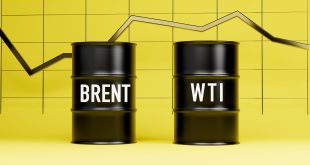Gold Prices:
- Spot gold inched up 0.2% to $3,396.25 an ounce, while Gold Futures were steady at $3,348.10/oz by 01:58 ET (05:58 GMT) on Friday.
- However, gold is heading for a third straight weekly loss, as a surging U.S. dollar dampens demand, despite the safe-haven demand spurred by escalating U.S. trade tensions.
Dollar Impact:
- The U.S. Dollar Index rose to its highest level in more than two months on Friday, and it was poised for its best weekly gain in nearly three years.
- A stronger dollar makes gold more expensive for holders of other currencies, which typically reduces buying interest in gold.
Trade Tensions Escalate:
- President Donald Trump took aggressive action on Thursday by signing an executive order introducing steep “reciprocal tariffs” on imports from several countries, ahead of the August 1 deadline.
- Tariff Rates:
- 15% on South Korean goods
- 20% on Taiwanese exports
- 19% on Thai exports
- 25% on Indian exports
- Additionally, Canada’s tariffs were raised to 35% from 25% due to insufficient efforts to prevent fentanyl shipments into the U.S.
- Tariff Rates:
Gold’s Response to Tariffs:
- Although heightened tariff actions typically boost demand for safe-haven assets like gold, the strong U.S. dollar continues to limit gold’s upside potential.
Metal Markets:
- Platinum Futures rose 0.4% to $1,298.35/oz, while Silver Futures inched 0.1% lower to $36.682 per ounce.
- Copper Futures stabilized after sharp declines:
- Benchmark Copper Futures on the London Metal Exchange rose 0.5% to $9,655.95 per ton.
- U.S. Copper Futures fell 0.2% to $4.423 a pound, continuing to reflect the 19% plunge on Wednesday after Trump’s tariff exclusion on refined copper.
The U.S. copper market is adjusting to Trump’s tariff plan, which will impose a 50% tariff on semi-finished copper products starting August 1, though copper ores and concentrates are exempt from the new duties.
Outlook: As trade tensions persist, and with a strong dollar, gold prices are expected to face headwinds, while the broader metals market continues to respond to geopolitical uncertainties and commodity-specific tariffs.
 Noor Trends News, Technical Analysis, Educational Tools and Recommendations
Noor Trends News, Technical Analysis, Educational Tools and Recommendations





